The St Augustine’s Centre is based in the town of Halifax and the borough of Calderdale. We explain the geography, history, famous places and people of the area. Plus superlative adjectives.
Transcript
DownloadMark
Hello, and welcome to the Podcast English for Life in the UK. This podcast is for those people who want to improve their English and at the same time, learn more about life in this country. And I'm joined today by Helen and Christine.
Helen - how are you today?
Helen
I'm fine, Mark - I've been for a nice walk, this afternoon. I'm a little bit nervous now, this is my first podcast, but I'm ready to go, yeah.
Mark
It's lovely to have you on the podcast and I'm sure you'll do fine. Christine, how are you?
Christine
Well, I'm very well too. And I too have been for a walk. It is such a beautiful, day here, in Calderdale. The sun is shining and the ground is all covered in snow. Very beautiful. How are you, Mark?
Mark
I'm good, thank you. I've got some quite exciting news because this morning I had my vaccination !
So, we're all ....in this country, we are all sort of waiting in a queue for when it's our turn , to have the vaccination, and I had a message two days ago, and, lo and behold, I was able to have my vaccination, this morning.
Christine
And you're not in pain?
Mark
No, I've had, I have had no after-effects.
Christine
Good.
Mark
So, today, we're going to talk a bit about where we are when we record this podcast. So, as many of you will know, if you are regular listeners, we are all volunteers at the St Augustine's Centre. This is a charity that supports those people in need. And in particular, in our area, we do a lot to support asylum seekers and refugees, and that includes helping them with improving their English. So we thought we'd tell you a bit more about where actually are we. Where is the Centre? So, Helen is going to start off by telling us a bit about that.
Helen
So, yes, Mark - the St Augustine's Centre is in Hanson Lane, which is close to the centre of Halifax - and Halifax is the largest town in the Calder Valley. There are other towns, along the Valley: Brighouse, Elland, Sowerby Bridge, Hebden Bridge, Todmorden, but Halifax is the largest one.
And these form the Borough of Calderdale - and Calderdale is part of West Yorkshire. It's a bit complicated. Yorkshire's a big place. We're in West Yorkshire. And that's part of Yorkshire in the North of England, and part of the UK.
Mark
Thanks, Helen. So tell us a bit more, Christine - about what Calderdale is. What does that mean, and where is it? And what's it like?
(3 minutes: 40 seconds)
Christine
Yes. Thank you. Yes. As you say, it's the local authority's name is Calderdale. In fact, it's a Metropolitan Borough of Calderdale. But the word Calderdale - it's an old word - "dale" is the old word for "valley" and Calder is the name of the river that flows through that valley. And Calderdale, really, is just .... a set of moorland in the south of the Pennines, and flowing through that is a large river and lots of its tributaries- and it's the River Calder. So there are very steep-sided valleys that go down to the River Calder and as Helen has said, Halifax is the largest town in that valley - and the largest town in Calderdale, because, of course, the river Calder does flow on - it goes near Wakefield and other large towns. But in Calderdale, Halifax is the main town and it's the largest one. So most of the land in Calderdale is moorland. There are hills but there are ... really - there are no high points - because most of the moorland is quite flat.
Mark
Christine, you mentioned the Pennines. What are the Pennines?
Christine
Oh yes! That's the name of the mountains - well, the hills, I should say - that go through the north of England, all the way from the Scottish border, down the centre of England and we are near the south of that ridge.
Mark
And can you describe moorland a bit more? What does it look like - the moorland?
Christine
Well, moorland is often quite boggy, quite wet - it's fairly flat land - often with grass and heather and tussocks is a nice word - little clumps of grass and heather. And traditionally, there have been sheep have been farmed on the moorland - and on the top edges of the valleys. And of course we've been talking about Calderdale which is our local authority and throughout the United Kingdom there are local authorities like Calderdale. Local authorities are responsible for things like roads, rubbish, they empty the bins, they run libraries and leisure centres and also a large part of the money they have goes towards looking after old people in residential homes. But they organise the education and housing for people. So, you may not live in Calderdale, but if you live in the United Kingdom, there will be a local authority in your area that has those responsibilities.
(7:04)
Mark
Now, Helen, that tells us a bit about where Calderdale is and a bit about the geography of it. What are the famous places in Calderdale? And maybe some of the famous people, as well?
Helen
Probably, the most famous place at the moment, is the Piece Hall , which is in the centre of Halifax. And the Piece Hall was built - I think it was 1779 - and it was built as a place to sell the woollen cloth that was being made in the local area - and it was a market place. And it's still there - in the centre of Halifax - and it was reopened about three years ago - it had had a little modernisation, and now it's got lots of little, interesting shops and a big space in the middle where people can sit, and cafes and music events. So it's a lovely space in Halifax.
Mark
I think we could probably say it's the most popular tourist place in Halifax. Do you think that's true?
Helen
Erm, yes - I think so and yeah, people are coming from all over the country - even my friend in London had heard about the Piece Hall. And the other reason that people are coming to Halifax, in the last couple of years, is because a Halifax woman has become more well-known and her name was Anne Lister. And Anne Lister was living in the 1700s and recently a TV programme was made about her. She lived in Shibden Hall , which is now ... well, it's now in a park that is open to the public. She was a lesbian woman and she wrote diaries about her life - all aspects of her life. She was a landowner, she was a diarist, she traveled widely, and so people are interested in her story, and in her life, and coming to Halifax to see the places that we associate with her.
Christine
What was the television programme called?
Helen
Erm - the programme was called Gentleman Jack which was the name that was used for her, because she dressed in quite a masculine way, I think.
Mark
I believe that programme was one of the most popular programmes on television in this country, last year, and I think they're making a new series; and I think that the actress - Suranne Jones - I think she won an award as the best actress, on television programmes, last year. Who else would you pick out, Helen?
(10:23)
Helen
Well, the other person who interests me is a woman called Elsie Whiteley, who, I remember from childhood because my Mum had some clothes with her dress label in them. Some of her blouses. And at the time, I didn't know that Elsie Whiteley was born in Halifax and started as a [sewing] machinist in a mill when she was 12 years old and eventually had 6 mills, and one of them, quite close to St Augustine's, it was at the bottom of Hopwood Lane. And she worked there. And the mill closed, I think it was in the late 1970s - but it has now been redeveloped as - it's called the Elsie Whiteley Innovation Centre, and it's down near the town centre. But she made the most beautiful clothes that sold all over the UK, including in London, Oxford Street.
Mark
You said "Innovation Centre" - how would you explain that to somebody?
Helen
Oh .... "Innovations" are new ideas, so I think, in the Elsie Whiteley centre - there are lots of small businesses, I think, and you can rent a space to develop your business ... erm .... if you're trying to start something new in Halifax,
Mark
So some of the newest ideas have been developed in places like that.
And now we've been joined by John, who's going to tell us a little bit about the history of this area.
So John, you're going to tell us a little bit about the history of the area.
John
Yeah - just a little bit about the .. some of the economic history, the demographic history of Halifax.
In the fifteenth century, Halifax became the hub of the West Riding of Yorkshire. And this was primarily due to its woollen manufacture.
So we've talked a little bit about the geography - so the geography, in and around Calderdale, it had a lot of steep hills and moorland which were ideal for raising sheep. Hence, the raw materials for the woollen industry.
We also had a lot of fast flowing rivers and streams which were able to produce the power of the water mills and latterly, it was found, as well, that we had significant coal deposits in this part of world. So as the water mills moved on to being ... erm... propelled by steam, we had the raw materials to work with cotton mills and more importantly, the woollen mills, in this part of the world.
We've mentioned the Piece Hall - so that's our woollen history attested to, by the presence of the magnificent Piece Hall, in Halifax, which was opened on New Year's Day [1 January] 1779 and this was the base for all the cloth merchants so the people who manufactured the cloth in their homes would bring their cloth into the Piece Hall. This was then sold by the merchants all around the world.
We moved on - as I said, the woollen industry [was] very, very important throughout that time, moving on to the 19th century - the wealth of Halifax came from the growth in manufacturing. So particularly, woollen goods, carpet manufacture - the place known as Dean Clough Mill - it still stands today, in the north end of Halifax - was, in its day, the largest carpet mill in the world - there's a factory [building] in that part of Halifax that is half-a-mile long; no longer working as a carpet mill. We'll talk a little bit about that later.
And this huge growth in wealth and manufacture needed to be managed and invested so, in 1853, Halifax saw the birth of what was then known as "The Halifax Permanent Investment and Building Society", which will be more well-known to people today as HBOS - which is "Halifax Bank of Scotland" - which is, to this day, one of the largest financial institutions in the UK; which still has its headquarters in Halifax and still employs quite a lot of people in the town.
During this period of growth, we ... obviously, huge amount of textile mills, bringing people in from all over the country to work in the new mills.
(15:13)
Huge rise in wealth and production also saw ... Halifax was during this time the centre of Chartism: agitation amongst working people for the vote , and for a growing sense of democracy, and as we moved into the 20th century, a big centre of organising in trade unions and the labour movement.
Mark
I believe it was also an important centre for the Suffragettes, as well.
John
It was - yeah, a lot of suffragette activity in Halifax - a lot of social and radical history associated with Halifax.
As we moved into the twentieth century, continued growth and success of these industries - woollen, carpet manufacturing some other manufacturing industries led to a demographic change in Halifax.
As people moved here from other parts of the world to find work, in the factories and mills in and around Halifax. So, for many years, Halifax had been a destination for Irish immigration. We still have a significant population of Irish descent, particularly, from the West coast of Ireland - so we have a lot of people of Irish descent in Calderdale. And post-World War II [Two], these Irish immigrants were joined by Poles, Serbians and many people from India, Pakistan, particularly, the Kashmir area, who also came to work in the textile mills.
More recently, of course, as we know at St Augustine's, we've seen significant - lots of people coming from places as far afield as Iran, or El Salvador, Syria, Africa - who have been moving to Halifax as refugees or asylum seekers.
From the 1970s onwards, successive governments in the UK presided over the decline of manufacturing - something which really hit Halifax quite hard. Manufacturing, especially in terms of clothes, carpets, things like that moved to the developing world and many jobs were lost but as we've seen, in recent years - Halifax has diversified a lot - diversified economically.
In recent years, we've shown this by the reinvention of sites such as the Piece Hall and the Dean Clough Mills which have basically moved into being centres of retail or as entertainment - so a lot of these great big buildings - huge mills and places like the Piece Hall - which were central to the manufacturing and distribution of material goods are now engaged in having concerts, they'll be filled with shops, they'll have wine bars, there are places of tourism which kind of mirrors the move away from, in this part of the world, from a manufacturing-based economy, into what we might call a tertiary economy. So, more engaged with services, tourism, entertainment, things like that.
(Music) (18:25)
Language Support
This is the part of the podcast where I choose some words and phrases from this episode to explain in a little more detail. Now, today's episode included quite a lot of difficult adjectives and complex words, particularly in the section on local history by John.
I'm not going to try to cover those words in this section, but just to remind you that the transcript for this and all our episodes is available on our website and in those transcripts, we include 'footnotes' - that is, a note to explain some of the more complicated words. So that transcript will be available a few days after this episode is published, on our website :
www.staugustinescentrehalifax.org.uk
and I'll spell the main part of that address, again:
-s-t-a-u-g-u-s-t-i-n-e-s-c-e-n-t-r-e-h-a-l-i-f-a-x
What I am going to do in this section is to talk a bit about a particular type of adjective, that was used quite a lot in this episode. It's something we call a superlative adjective so this is when we are comparing things and we are saying something is at the extreme - at the upper or lower level or limit - of something. So, for example, in the text we talked about Halifax being the largest town in Calderdale. John talked about a carpet mill which was the largest in the world. I talked about some of the newest ideas and then we talked about the Piece Hall being the most famous place, the most popular tourist place. We talked about a television programme being the most popular programme and we talked about an actress being the best actress.
All of those are examples of superlatives. They are at the extreme - the largest, the most famous - and you will notice that they take different forms. And there are really three main forms. For short adjectives, you can usually just add
" -est"
to the end. So, large becomes largest - new becomes newest.
Then, for longer words - longer adjectives, with two or three syllables, you add
"most"
to the front of the adjective: so you get "the most famous" and "the most popular".
And then, as in so many things in the English language, there are some exceptions - so the third area are words which have their own special superlatives and the three most common ones of those are:
Good - becomes best - so, you could talk about "the best football team in the country";Bad - becomes worst - so, you could say "I've had the worst day this week" and
Little - becomes least - so: "this is the least expensive toy that I could find".
So those are the three main ways in which you make superlative adjectives and you will have found some of those examples in this episode and I am sure you will find more if you look for them, elsewhere.
That's it for this week - don't forget you can always contact us and give us feedback on this episode or the podcast generally at our email address, which is:
englishforlifeintheUK@gmail.com
Until next time, stay safe and keep working at your English.
__________________________________
(24:54) end.
All Podcast Episodes

St Augustine's Centre

Map of Calderdale
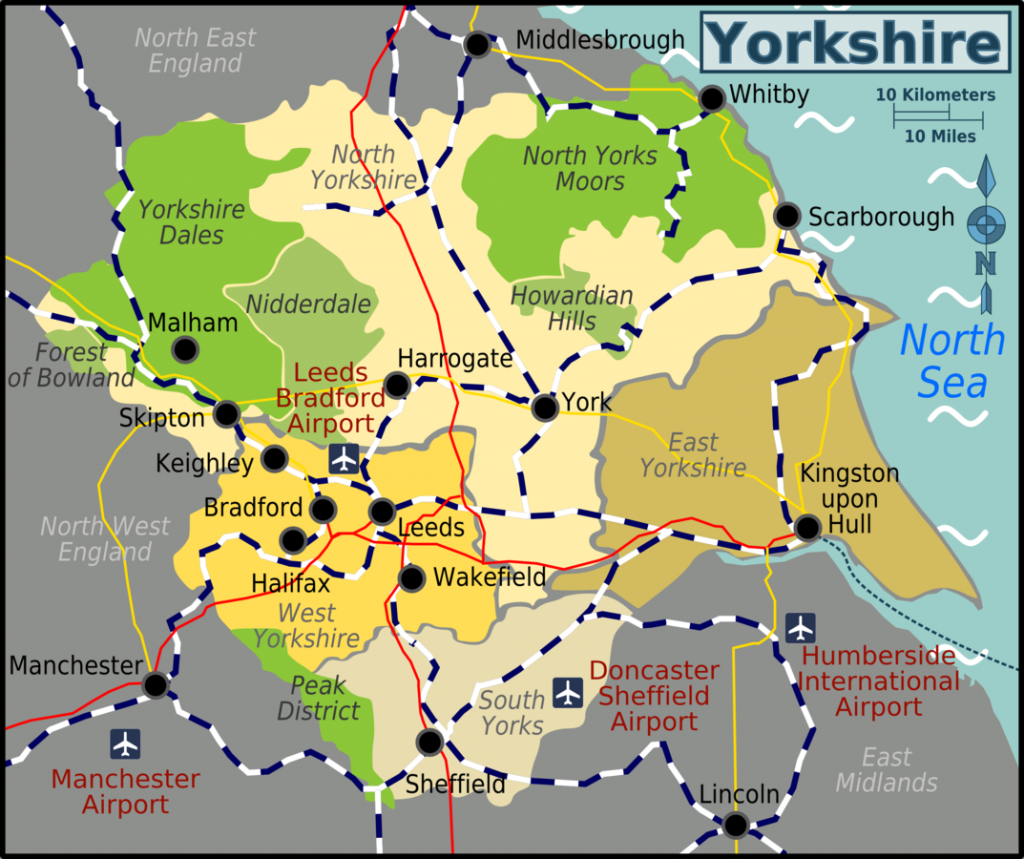
Map of Yorkshire
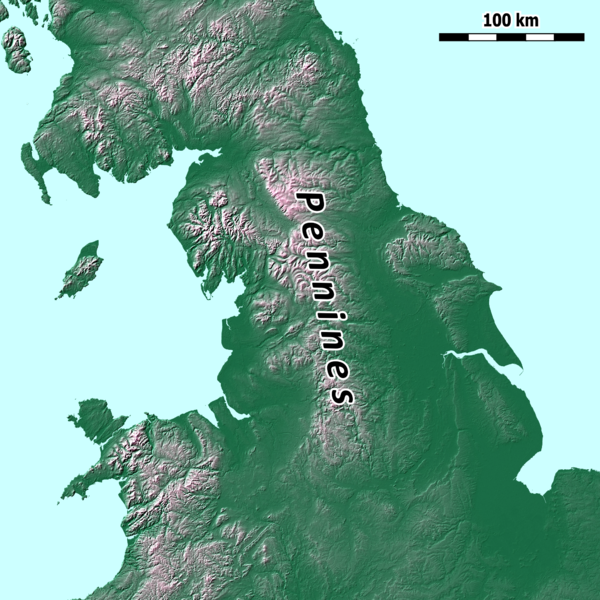
Map of the Pennines
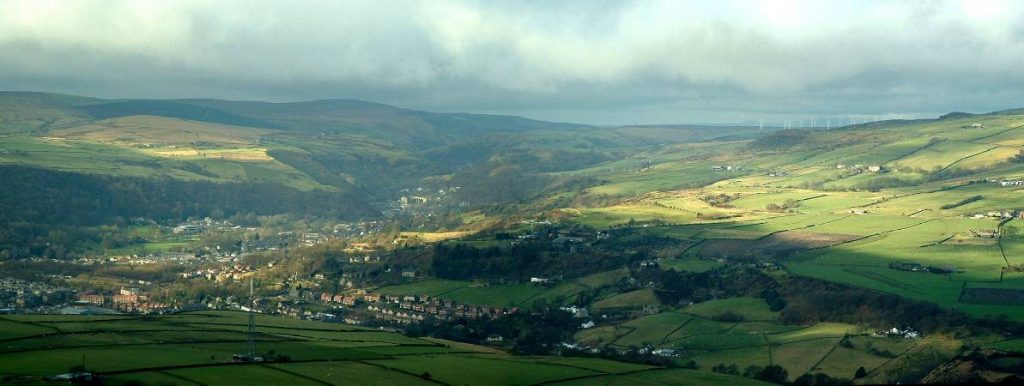
Upper Calder Valley By BJG71 - Own work, Public Domain, https://commons.wikimedia.org/w/index.php?curid=19139773
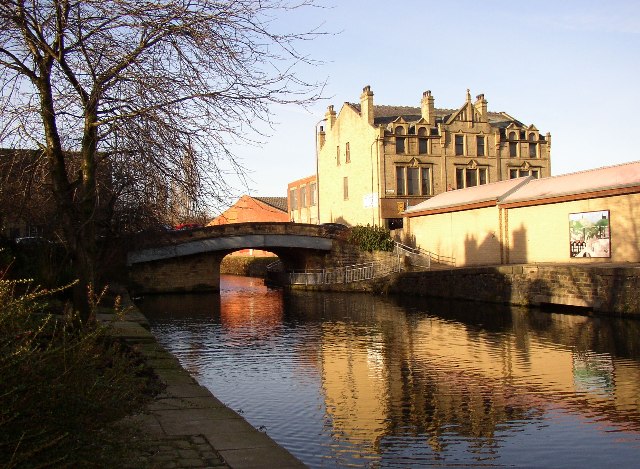
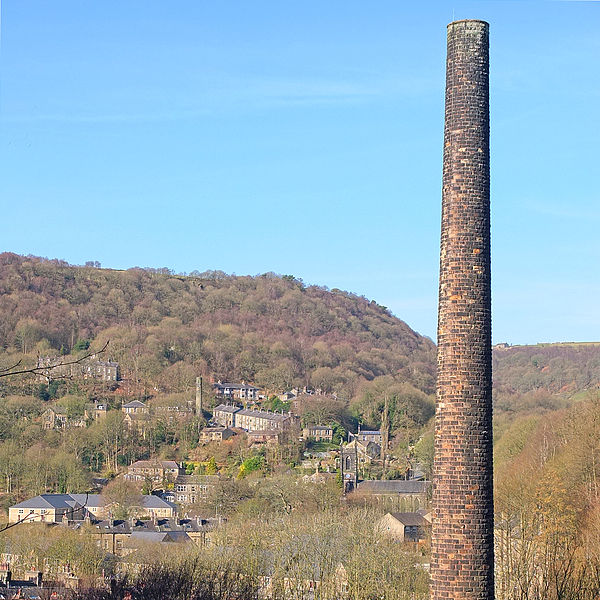
Hebden Bridge https://www.flickr.com/photos/atoach/8482442619/in/photostream

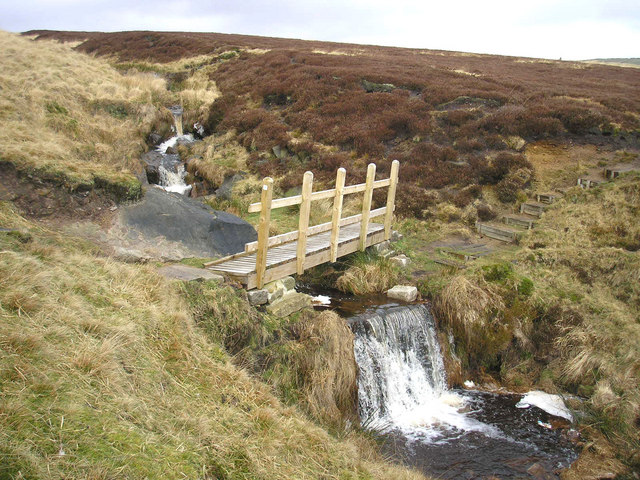
Boggy

The Piece Hall

Dean Clough


